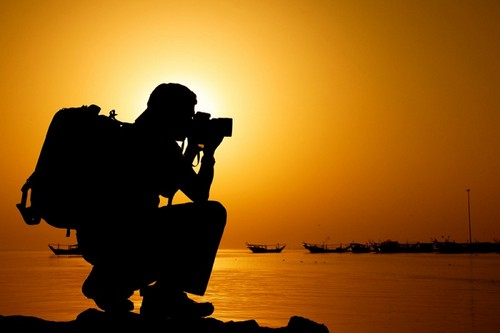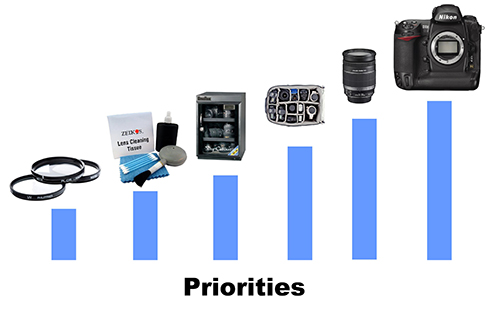
Being new to photography means being excited in buying new lenses, flash, and the endless additional camera accessories. But before you splurge, it’s best you understand the priorities and which are must-buys. Here is oneslidephotography.com’s version of priorities in order:
1. Camera Body
Of course, since without it, there’s no buying anything else.
2. Lens
At the least, if you’re buying a lens for the first time, buy an all-around zoom lens. This lens can take pictures in both wide angles and telephoto shots. The all-around zoom lens comes in different varieties such as the 18-200 mm, the 18-135 mm, and the 28-135 mm. This is a very flexible lens for everyday use. It’ll be a hassle to start out with a lens that’s only wide or only tele.
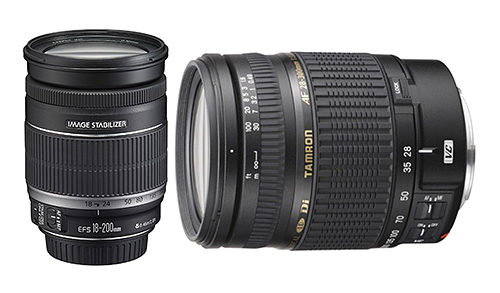
3. Camera Bag
Buy a bag that’s specifically designed for story cameras. There are usually foam barriers included inside to protect the camera from any impact and friction. Also, buy a bag that fits the size of your camera. A bag too small means you’ll have a hard time packing it in, and a bag too big means the camera won’t fit snug enough and it’ll easily get shaken inside.
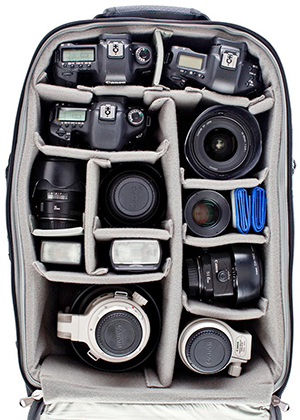
4. Camera Storage (Dry Cabinet)
A camera bag isn’t an ideal place to store your camera when it’s not in use for a long period of time. Buy a dry cabinet (dry box) for your camera. As its name suggests, a dry cabinet is used to store the camera in a dry environment where the humidity is controlled to avoid mildew.
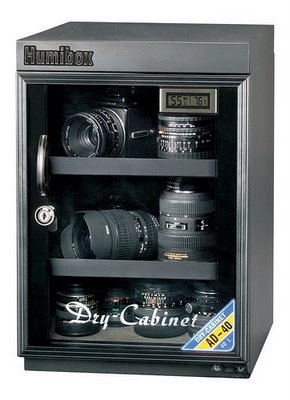
5. Cleaning Kit
Don’t use just anything to clean your camera. Clean the surface of your lens only with a micro fiber cloth or special lens tissues so you won’t scratch the lens’ surface. Use a blower to clean the camera’s interior and never blow it using your mouth because the water vapors in your breath can lead to corrosion.
6. Filters
Before buying a filter for the lens, you must first understand the functions of the different kinds to really maximize its use. Consult articles in the “filter” category.
7. External Flash
Invest on an external flash, because it’s super useful when photographing in low-lighting conditions.
8. Tripod
Tripods are very useful for shooting slow speed photography (bulbing) as well as for photographing in low light without using a flash.
9. Extra Lenses
Once you have an all-aroudn lens, I recommend purchasing an additional lens that has special features like a fisheye, an ultra wide, a telephoto lens, or a lens with a super wide aperture (f/1.2, f/1.4, or f/1.8). One beginner favorite is the 50 mm f/1.8.
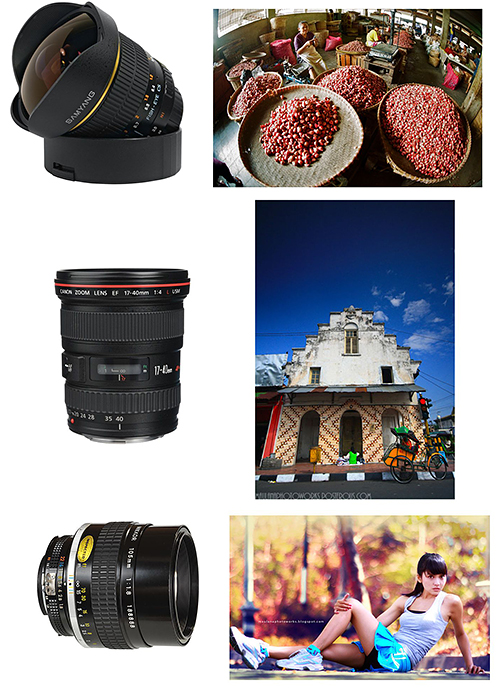
10. Backup Memory Unit
Owning 2 4GB memory cards is better than having 1 8GB memory card because this means that you’ll have a backup memory unit if one of them becomes problematic. Also, this lessens the chance of you losing all of your data because you saved it in one memory device.
11. Backup Battery
Running out of batter in the middle of a photoshoot is one of photographer’s worst nightmare. Invest on an extra battery if you have an extra budget.
12. High-Quality Card Reader
A good card reader reads and writes your files much faster and it also lessens the chance of a memory card error when you connect to a computer.
Hope this helps in your decision-making of your future photography needs.













